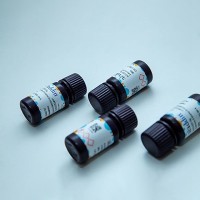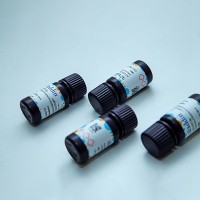Purification and Characterization of Poly(ADP-Ribosyl)ated DNA Replication/Repair Complexes
互联网
543
PARP-1, the best studied isoform and most abundantly expressed member of the PARP family of 18 proteins, catalyzes the poly(ADP-ribosyl)ation (PARylation) of various nuclear proteins and play key roles in DNA repair, genome maintenance, DNA replication, recombination, apoptosis, gene expression, and regulation of chromatin function. PARylation modulates the functions of target proteins, mainly PARP-1 itself. A multifunctional enzyme, PARP-1 has been localized within DNA replication, repair, recombination, and transcription complexes, and modifies and regulates the functions of specific components of these complexes. PARylation can regulate the activities of replicative enzymes, such as DNA polymerases α, δ, and ε, topo I and II, primase, RPA, and PCNA in isolated enzymes or within DNA replication complexes (DNA synthesome). PARP-1 and PARylation may (1) play dual roles in nuclear processes, depending on the levels of the substrate NAD and the presence of PARP-activating DNA breaks, (2) recruit acceptor proteins to certain sites or complexes through direct association or through binding to PAR and PAR-binding proteins, and (3) alters the nucleosomal structure of DNA by PARylation of nucleosomal proteins, such as histone H1 to destabilize higher order chromatin structures and promote access of DNA repair and replication enzymes as well as transcription factors to these sites. Here, we describe biochemical approaches that have been utilized in our laboratory for the purification and characterization of PARylated DNA replicative complexes. These methods can be modified for the purification of complexes involved in other nuclear processes. This chapter also briefly discusses current methods by which new PARylated complexes are being identified and studied. Identification, evaluation, and characterization of new complexes could aid in the elucidation of the molecular mechanisms by which PARylation and PARP mediates its pleiotropic roles in various nuclear processes.









